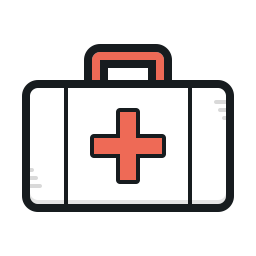Benzos, a new problem for Primary Care Practitioners

 Mental Health Update | Heightened awareness of the dangers of prescription opioids has prompted a movement to limit use of opioid therapies for patients with acute or chronic pain.
Mental Health Update | Heightened awareness of the dangers of prescription opioids has prompted a movement to limit use of opioid therapies for patients with acute or chronic pain.
Primary care practitioners stand on the front lines of this care shift, and many are curtailing prescribing opioids in response.
But is the solution to the drug epidemic this straightforward?
From Jeffrey Gudin, MD. My experience as a pain management specialist suggests that opioid use disorder is just one facet of a larger and more complicated drug misuse crisis affecting our country. For evidence of this complexity, one need look no further than new research on an entirely different class of prescription drugs: benzodiazepines.
Benzodiazepines are a class of medications that act on the central nervous system and are used primarily to treat anxiety, seizures, and alcohol withdrawal. All benzodiazepines are listed as DEA schedule IV controlled substances, meaning they have the potential for abuse, addiction, and diversion. Combined with opioids, benzodiazepines can depress respiration, causing coma or death. An estimated 30% of opioid-related deaths involve benzodiazepines.
According to an analysis in JAMA Network Open of 386,457 ambulatory care visits in the United States, the rate of benzodiazepine-related visits nearly doubled in recent years, from 3.8% in 2003 to 7.4% in 2015. The study also found that co-prescribing benzodiazepines with opioids had quadrupled, and by 2015, benzodiazepines and opioids were co-prescribed in 19.2% of visits.
These latest data align with findings of an analysis of drug monitoring laboratory tests performed by Quest Diagnostics and published in the Journal of Addiction Medicine.
My colleagues and I found that >25% of patients tested used opioids and benzodiazepines together. In 52% of these cases, at least 1 of the drugs was not prescribed, suggesting concurrent use without clinical oversight. Laboratory monitoring provides objective evidence of actual drug use, which prescribing data may understate.
Perhaps the most surprising finding from the study in JAMA Network Open is the oversized role primary care plays in generating benzodiazepine prescriptions, accounting for approximately half of all benzodiazepine-related visits to ambulatory care centers (52.3%).2 In many cases, providers prescribed benzodiazepines for back or chronic pain, conditions for which they have questionable value. Why are these patterns occurring? While I believe there are many factors, one crucial one is so obvious, it is often overlooked: the lack of quick-fix solutions for pain.
Why are these patterns occurring? While I believe there are many factors, one crucial one is so obvious, it is often overlooked: the lack of quick-fix solutions for pain.
As healthcare providers, we want to provide favorable outcomes for patients, but when it comes to managing pain, we often don’t know how. And the prevalence of chronic pain — affecting 1 in 5 individuals, according to the Centers for Disease Control and Prevention4 — makes us desperate. So we turn to a drug that may, we hope, provide some relief.
The good news is that primary care practitioners can help minimize the dangers of inappropriate drug use, both prescription and illicit. Compiling a thorough patient history on drug use and educating patients on the dangers of combining drugs is paramount.
Using state-based prescription drug monitoring programs and guideline-recommended urine drug monitoring can illuminate dangerous drug use patterns. Finally, setting realistic expectations and seeking other sources of pain relief are critical.
Curtailing the number of prescriptions for opioids is necessary to reduce drug misuse, but let’s not kid ourselves. The drug epidemic is much bigger than opioids, and effective pain therapy is key. Until science provides it, primary care practitioners must educate patients on appropriate drug use to minimize risks and help prevent another tragic drug-related death.


